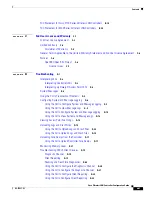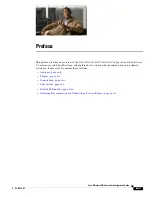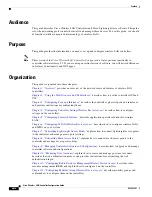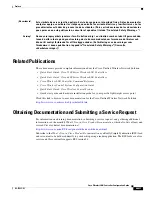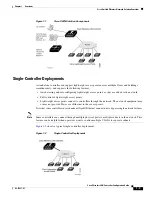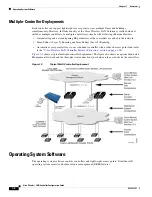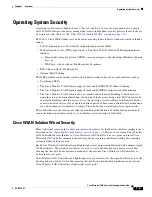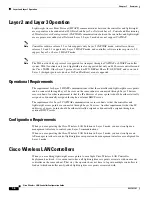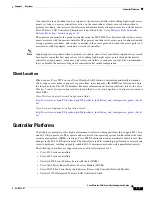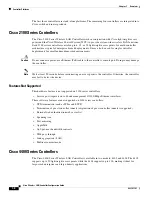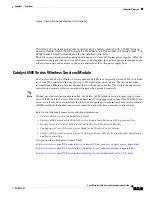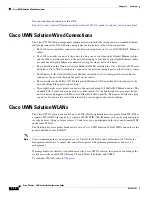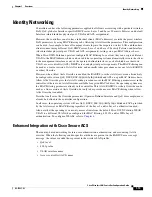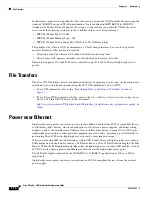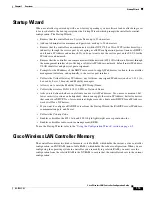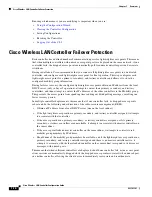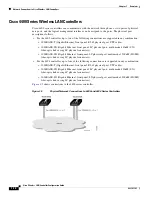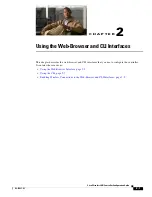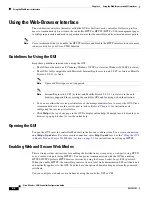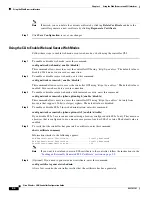
1-7
Cisco Wireless LAN Controller Configuration Guide
OL-17037-01
Chapter 1 Overview
Controller Platforms
One controller in each subnet can be assigned as the master controller while adding lightweight access
points. As long as a master controller is active on the same subnet, all new access points without a
primary, secondary, and tertiary controller assigned automatically attempt to associate with the master
Cisco Wireless LAN Controller. This process is described in the
“Cisco Wireless LAN Controller
Failover Protection” section on page 1-16
.
The operator can monitor the master controller using the WCS Web User Interface and watch as access
points associate with the master controller. The operator can then verify access point configuration and
assign a primary, secondary, and tertiary controller to the access point, and reboot the access point so it
reassociates with its primary, secondary, or tertiary controller.
Note
Lightweight access points without a primary, secondary, and tertiary controller assigned always search
for a master controller first upon reboot. After adding lightweight access points through the master
controller, assign primary, secondary, and tertiary controllers to each access point. Cisco recommends
that you disable the master setting on all controllers after initial configuration.
Client Location
When you use Cisco WCS in your Cisco Wireless LAN Solution, controllers periodically determine
client, rogue access point, rogue access point client, radio frequency ID (RFID) tag location and store
the locations in the Cisco WCS database. For more information on location solutions, refer to the
Cisco
Wireless Control System Configuration Guide
and the
Cisco Location Appliance Configuration Guide
at
these URLs:
Cisco Wireless Control System Configuration Guide
:
http://www.cisco.com/en/US/products/ps6305/products_installation_and_configuration_guides_list.ht
ml
Cisco Location Appliance Configuration Guide
:
http://www.cisco.com/en/US/products/ps6386/products_installation_and_configuration_guides_list.ht
ml
Controller Platforms
Controllers are enterprise-class high-performance wireless switching platforms that support 802.11a/n
and 802.11b/g/n protocols. They operate under control of the operating system, which includes the radio
resource management (RRM), creating a Cisco UWN Solution that can automatically adjust to real-time
changes in the 802.11 RF environment. The controllers are built around high-performance network and
security hardware, resulting in highly-reliable 802.11 enterprise networks with unparalleled security.
The following controllers are supported for use with software release 5.2:
•
Cisco 2100 series controllers
•
Cisco 4400 series controllers
•
Catalyst 6500 Series Wireless Services Module (WiSM)
•
Cisco 7600 Series Router Wireless Services Module (WiSM)
•
Cisco 28/37/38xx Series Integrated Services Router with Controller Network Module
•
Catalyst 3750G Integrated Wireless LAN Controller Switch

